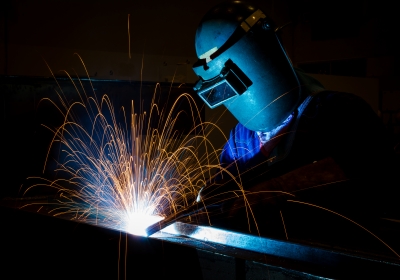Critical Skills Beginning Welders Need to Master
The welding trades provide opportunities for more than 350,000 individuals in the United States alone. As of 2012, there were 357,400 welders, cutters, solderers, and brazers in the United States, making on average $17.45 an hour or $36,300 annually. The lowest 10 percent earned less than $24,720, and the top 10 percent earned more than $56,130. The primary job of a welder is to join pieces of metal with a weld. Such individuals are employed in the manufacturing, shipbuilding, and construction industries. A person with a high school diploma (or equivalency degree) and some additional training is qualified to become a welder.
Becoming a welder requires you to master certain critical skills necessary to be successful. Some of these critical skills include having an understanding of the different types of welds, mastering amperage and filler speed, and understanding how to choose the correct filler rods.
Understanding the Different Types of Welds

Welding processes in the automotive and manufacturing industry use gas metal or gas tungsten arc welding. Plasma arc and shielded-metal arc welding are also processes that are used in manufacturing. Working with stainless steel requires a mastery of the tungsten inert gas or TIG welding process. If you really want to get exotic you can learn underwater welding.
Mastering Amperage and Filler Speed
Some of the more advanced types of welding like MIG and TIG require more than just manual work. Understanding amperage and wire filler speeds is important when performing any type of welding requiring inert gas (either MIG or TIG welding). Amperage refers to the strength of the electrical current needed to perform a weld. Amperage is measured by amperes, or amps. The best way to determine the amount of amps needed for a particular weld, as well as the filler speed setting needed for a MIG/TIG welding job, is to use a wire thickness and ampere chart.
Calculating amps can be done by taking the gauge or thickness of the metal and converting it to a decimal; this will give you its relative amp number. For example, a piece of metal that has a thickness of 10 gauge is equivalent to about one-eighth of an inch, or 0.125. The corresponding amps would be 125 (multiply 0.125 x 1000). As for filler speed, the amount of wire per amp multiplied by 125 will yield the speed, as expressed in inches per minute, or IPMs. However, with a bit of experience this process will become second nature.
How to Become a Welder
Many high school technical education courses offer formal training in welding and courses are offered in vocational–technical institutes, community colleges, and private welding, soldering, and brazing schools. It is also helpful to have experience or a course in blueprint reading, shop mathematics, mechanical drawing, physics, chemistry, and even metallurgy.
An understanding of electricity can be helpful, as well as knowledge of computers as welding, soldering, and brazing machine operators become more responsible for programming robots and other computer-controlled machines.
You may also like:
- Demanding Jobs: Rigorous Physical Careers
- 5 More Dangerous Jobs
- Tips for Selecting the Right Technical Training Program
- Changing Directions: Five Careers to Get You Ahead
 |
 |
 |
 |
| How To Weld (Motorbooks Workshop) | Welding For Dummies | Welding Symbols Quick Cards | Welding and Metal Fabrication |
About the Author:
Max Christiansen is a freelance writer based in Tulsa, Oklahoma. Max focuses on career advice, professional training, education, business development and other related topics.
Image courtesy of bugphai / FreeDigitalPhotos.net”.
